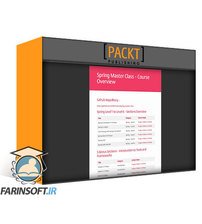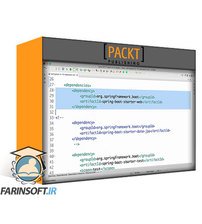در حال حاضر محصولی در سبد خرید شما وجود ندارد.

GCP ACE - Google Cloud Associate Cloud Engineer certification. Begin your Google Cloud Platform - GCP journey!
در این روش نیاز به افزودن محصول به سبد خرید و تکمیل اطلاعات نیست و شما پس از وارد کردن ایمیل خود و طی کردن مراحل پرداخت لینک های دریافت محصولات را در ایمیل خود دریافت خواهید کرد.


آموزش کدنویسی Spring Framework
![[NEW] Python Bootcamp: Master Python Programming in 2024](https://farinmedia.ir/farinmedia-img/https://farinmedia.ir/farinmedia-img/images-123/27719.jpgmain-resized.jpg)
[NEW] Python Bootcamp: Master Python Programming in 2024

آموزش کدنویسی وب سرویس ها با زبان Java Spring Boot

کورس کدنویسی Hibernate and JPA بوسیله زبان Spring Boot

Generative AI with ChatGPT and OpenAI API

Generative AI with Google – Bard, PaLM API and Google Cloud

Learn AWS – Deploy Java Spring Boot to AWS Elastic Beanstalk

AWS Certified Developer Associate – AWS Certification

Docker for Beginners: DevOps for Java & Spring Boot
✨ تا ۷۰% تخفیف با شارژ کیف پول 🎁
مشاهده پلن ها